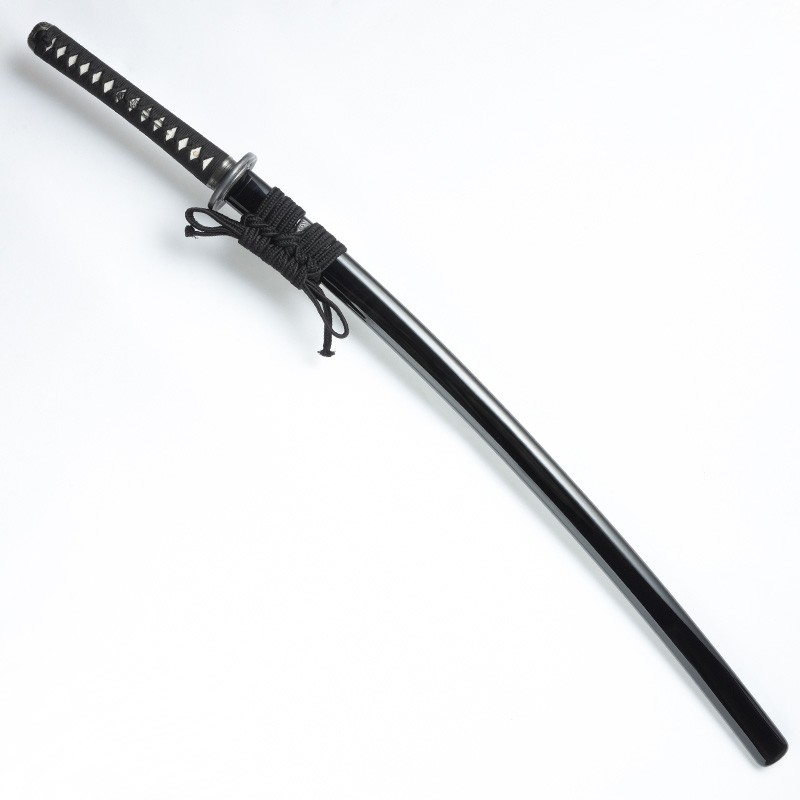
































Original model only
More informations about this product
The Dotanuki Koshirae 同田貫拵 is a customizable Iaito with a heavy blade and superior finish quality.
The name Dotanuki refers to a style of forge originating in the ancient province of Higo (today Kumamoto), on the island of Kyushu, in the west of Japan, in the mid 16thth century. This type of blade is attributed to Oyama Kozuke No Suke Nobuyoshi, better known as Dōtanuki Masakuni.
At the end of the 16thth century, the governor of Higo Province, Katō Kiyomasa 加藤 清正, was a follower of Toyotomi Hideyoshi, then Ieyasu Tokugawa. He was recognized as a seasoned warrior and was one of the 7 spears of Shizugatake, bodyguards of Hideyoshi. During the Korean campaign, his soldiers named him "Demon General" (Kishōkan).
Nobuyoshi forged in the service of this great lord Kato Kiyomasa, and the latter granted him to carry the Kanji Masa of his name to create his name of blacksmith Masakuni.
Known for their sobriety, durability and superior sharpness, Dōtanuki blades are more focused on their combat capabilities. Dōtanuki swords are made to withstand the years and harshness of the battlefield. With their reputation of being able to slice most of their targets, this made them very popular swords by the fighters of that time.
All customization options are possible on this Iaito, we advise you to keep specifically the Fuchi and Kashira which is, with the Kurigata and the thickness of the blade, the specificity of the Dōtanuki.
The blade type for this fixture is a heavy blade, approximately 1100g.
Nagasa length possible from 2.20 尺 (66.6cm) to 2.70 尺 (81.8cm).
size charts (see attached table of recommended sizes)
Standard (Basic) Mounting Specifications:
Habaki: Shonai (old-fashioned design), made of brass.
Tsuba: Musashi 武蔵, Tsuba open with two oval shapes. This shape is attributed to Miyamoto Musashi.
Fuchi/ Kashira/ Kurigata: Uzumaki No Zu 渦巻きの図 (Spiral pattern), Kashira rounded in blackened iron. This pattern is one of the oldest Japanese pattern, dating from the Jomon period, and is often found on the stones of the burial mounds.
Same: Galuchat (Roussette or Raie), White.
Menuki: Ebi 海老 (Shrimp/Lobster), made of iron. Shrimp/lobster is a symbol of longevity and vigor. Kanji can read "Old Man of the Sea".
Tsukaito: Upper black cotton handle braiding.
Sageo: Pure black cotton with large mesh.
Saya: Kuroro 黒呂塗り, Saya lacquered black gloss, Magnolia wood, with Kurigata steel pattern Uzumaki no Zu (Spirals), Koiguchi reinforced, and Kojiri rounded.
The Minosaka Workshops :
The Iaito we offer come from Minosaka workshops in Gifu, Japan, and are manufactured in their workshop in Japan.
Gifu is one of the top places known for the forging of traditional sabres, including the Mino tradition, dating from the 14th century. Minosaka workshops are Iaito’s leading producers of tradition.
This traditional workshop manufactures its chrome-plated Zamak Iaito (Zinc and Aluminum alloy with some Copper) which is stainless.
This non-ferrous alloy makes the Iaito blunt and unsharpenable:
They are practical tools for Kata, without contact between the blades.
Share your opinion
error Your review appreciation cannot be sent
feedback Report comment
check_circle Report sent
error Your report cannot be sent